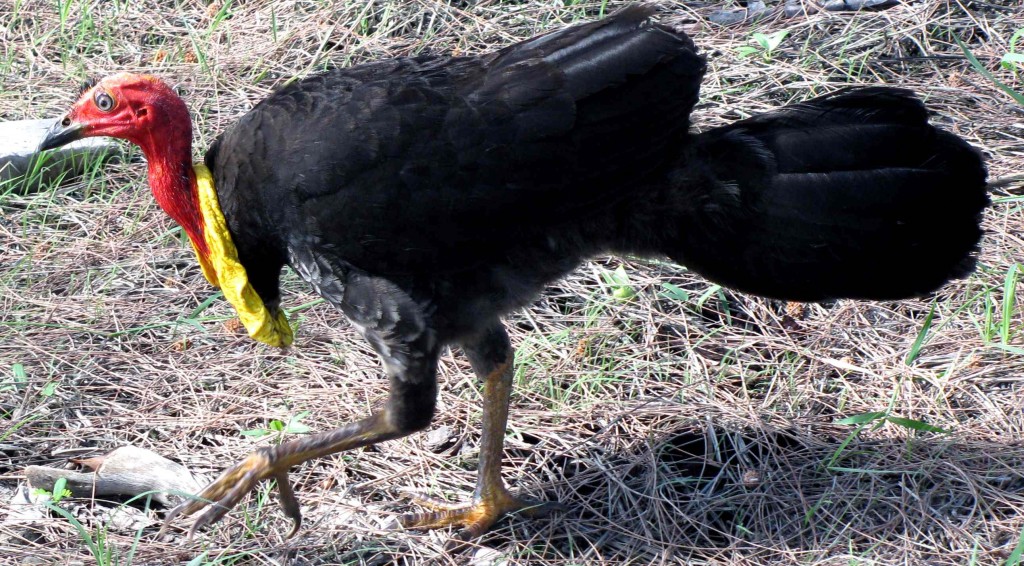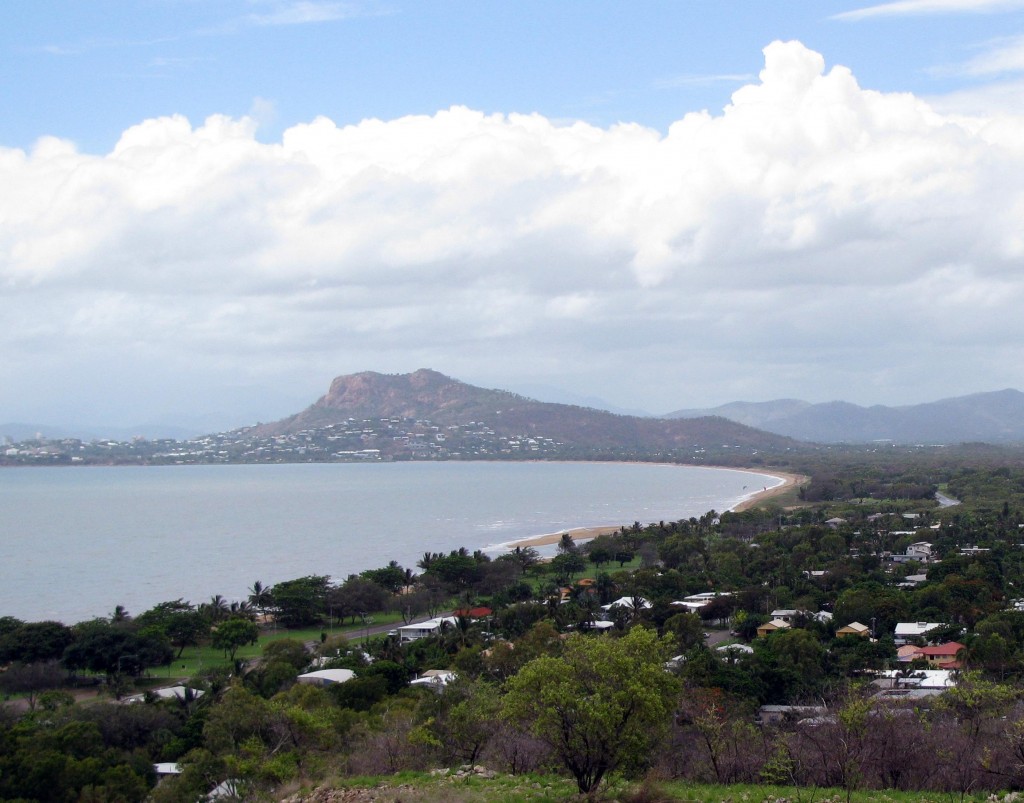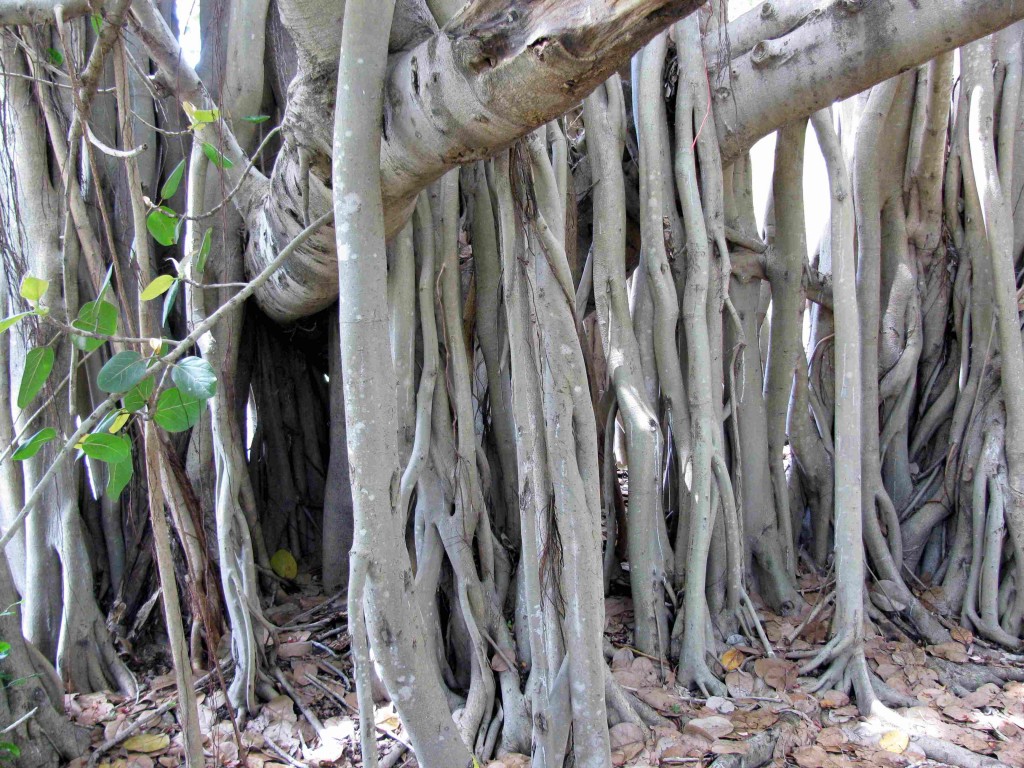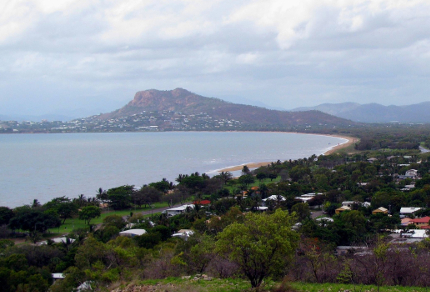A black kite winged over the river park as I ran and walked in early morning, its feathered strokes slow and powerful, its dark tail forked. In a shallow pool of rainwater nudging the path, a slender, grey heron stood on long stick-legs, its white face a frog-killer’s mask behind a slim, dagger-like beak. The white-faced heron flushed into the air on my approach, trailing yellow legs as it lifted into graceful flight.
Intent on searching for rental notices tacked to fences or perched on the lawns in front of houses near the river, I left the park. From a dead-end street offering access to the park, I noticed Vilis inline skating on the paved path in the distance. Dressed in rust and black, he leaned forward, pushing out long leg strokes. Behind him, the river was broad and dark, its banks a riot of green, the distant ranges of hills beyond it screened by blue capes of cloud or bathed by shafts of light that penetrated the clouds’ darkness like the breath of God.
After breakfast, Vilis and I donned long-sleeved and long-legged attire and drove 6 kilometres north from Townsville along the shore to Cape Pallarenda Conservation Park. On a fence beside the parking area, a welcome sign informed us that dingoes and kangaroos frequent the picnic area. We saw neither of those, but a startling number of Australian brush-turkeys scratched leaf litter and strode silently through open paperbark and eucalyptus woodland. One male, which Vilis shadowed and photographed, presented a striking trio of colours – black-feathered body, bare and wrinkled scarlet head and neck, and brilliant yellow wattle encircling his neck and dangling from it like a short, lumpy scarf. He seemed unconcerned by human attention, continuing to wend his way among trees.

Australian Brush-turkey (© Vilis Nams)
We walked a short track to the beach, which mimicked the northwest-to-southeast sweep of The Strand, but stretched in a much longer arc. Grey-green ocean pounded shoreward in murky waves blown inland by a brisk east wind. The high tide mark was littered with leaves, twigs, shells, and coconuts of various sizes. Coastal she-oaks with dark, peeling bark, small, knobby cones, and weeping 15- to 25-centimetre, needle-like branchlets overhung the beach and stabilized low sand dunes.
Leaving the beach, we climbed a rock-rubble slope and angled across it onto a rocky headland, where we met a middle-aged man and woman carrying fishing gear. Vilis inquired as to how the fishing is going, to which the man replied, “Too windy.” Another fishing enthusiast, a young man, perched on a rock shelf with the ocean slamming into surge channels beside him and two long rods braced one on each side of him.
We followed a track upland over loose, angular rock and paused at what appeared to be an abandoned military look-out. With a white sheet of precipitation rapidly moving shoreward, it looked as though we might need to duck into the concrete shelter to avoid a soaking. Beside us, grasses were greening up, and twisted, stunted shrubs showed the black evidence of fire (likely another prescribed burn). Flying insects buzzed, flapped, and zoomed everywhere, and ants crawled in moving ribbons over the rocks.
The sheet of precipitation veered to the west, so we resumed our climb with the mid-morning sun blazing down and reflecting off pale rocks at our feet. We encountered more remains of concrete buildings, which an interpretive display informed us were the remnants of gun placements and searchlight towers that were manned by Australian and American armies during World War II.

View from Cape Pallarenda, with Castle Hill in centre back (© Vilis Nams)
From high on the hillside, the view was spectacular. Offshore, Magnetic Island rose as a haze-screened aggregation of steep, forested hills. Across the breadth of Cleveland Bay, Townsville reached out to the ocean with a long finger of docks and jetties and crawled up the base of Castle Hill as though it were an invading army seeking to conquer the thrusting peak. A small sailboat skimmed among the whitecaps of the bay, and a kite surfer raced across the breakers. The surfer controlled the position of the kite – a wide, semi-circular band of fabric with a stiffened frame – by moving a bar to which cords connecting to the kite were attached. He or she wore a harness tied to the bar, as well as a full wetsuit, the latter perhaps for warmth, but also likely for protection against box jellies and irukandji. Vilis and I watched the surfer execute clean sweeps of surfing interrupted by dunkings in the bay.
As we followed a track and then an eroded watercourse upward toward what appeared to be a small observatory perched on a platform atop the cape, shadows infiltrated the sunshine glaring off the rocks. When I glanced behind me to the ocean, I felt a jolt of alarm at the sight of a wall of purple cloud obscuring the horizon and Magnetic Island, with a thick sheet of white moving inshore ahead of it.
Knowing we wouldn’t escape this time, Vilis and I scrambled for the top of the hill, hoping to find shelter beneath trees or buildings. Scattered raindrops touched us, and then, as we pushed through clinging, thorny shrubs, hard raindrops slapped us, soaking our backs while we conquered the last metres to the top. There, we huddled beneath the canopy of a low tree to wait out the heavy shower. A chain-link fence topped by two strands of barbed wire separated us from buildings associated with the small observatory (actually a radar station), which a sign proclaimed as the property of the Royal Australian Air Force.
After the shower ended, mosquitoes appeared in droves, swarming onto Vilis’s black t-shirt and biting through my green, long-sleeved top. We skirted the fence and hiked down a narrow road from the observatory, my white pants streaked with soot from burned shrubs, my shirt snagged from thorns, and the road’s incline so steep we leaned back for sections of it. Only in a place that never experiences snow or ice could you build a road like that. Otherwise, it would be a death drive.
Off to our right, the vast wetlands within the Townsville Town Common Conservation Park spread to the west, their drainage to the ocean partially blocked by the Many Peaks Range. “That’s one huge mosquito breeding ground,” I told Vilis, and then slapped a half dozen mozzies on his back.
At the bottom of the hill, we walked around a locked gate guarded by barbed wire, a yellow sign on the far side warning park visitors that the road was off-limits and patrolled by Australian Air Force police dogs. “And here, we thought mosquitoes were our biggest problem,” I quipped to Vilis.

Hanging Roots of White Fig Tree, Cape Pallarenda Conservation Park (© Vilis Nams)
Hot and itchy, sweating and slapping, we nonetheless paused next to a massive white fig tree near the carpark and entered the damp shade beneath its canopy. Around us, hanging, adventitious roots dangled from branches, many having found the ground and grown into clumps of twisted, entwined trunks that stood like braided columns holding up the tree’s ceiling or partitions within a massive, airy room 30 metres wide. “This,” I told Vilis as I sidled between two columns and envisioned great snakes coiled among the great, twisted roots that could be snakes themselves, “is where I would expect to find pythons.” “Well, let me know if you see one,” he replied.
Australia is home to thirteen species of pythons – about half of the world’s total.1 Nine of these species inhabit the tropical north, with five species – the spotted, black-headed, water, scrub, and carpet or diamond pythons – occurring in the Townsville area.1 All are non-venomous, but pack a pair of long, recurved fangs to grab hold of prey, which they subsequently coil around and suffocate by constriction.1 The country’s largest python, the scrub or amethystine python, reaches lengths of 5 metres or more and can kill wallabies; the country’s and world’s smallest, the pygmy python, only grows to 60 centimetres and feeds on geckos.1 The pythons’ ability to consume prey much larger than their normal body diameter is facilitated by the snakes having loosely-articulated bones in their skulls and very small scales. The first allows the pythons to expand their mouth opening to accommodate the ingestion of prey; the second results in great skin elasticity which eases the passage of a bulky prey item into the snake’s digestive tract.1
In his get-acquainted-with-my-house e-mail note, Richard told us, “There are a couple of pythons that pass through the grounds every few weeks … have seen them twice in 15 years; there are tree snakes (harmless) but I almost never see them. Very rarely there are eastern brown snakes seen … on the ground, plain brown colour … avoid. Possums dance on the roof … with luck the pythons will nail them.”
We’ve got the possums. Now, we need those pythons.
Reference:
Steve Wilson and Gerry Swan. A Complete Guide to Reptiles of Australia. 2008. New Holland Publishers (Australia) Pty Ltd, Sydney, p. 392.


